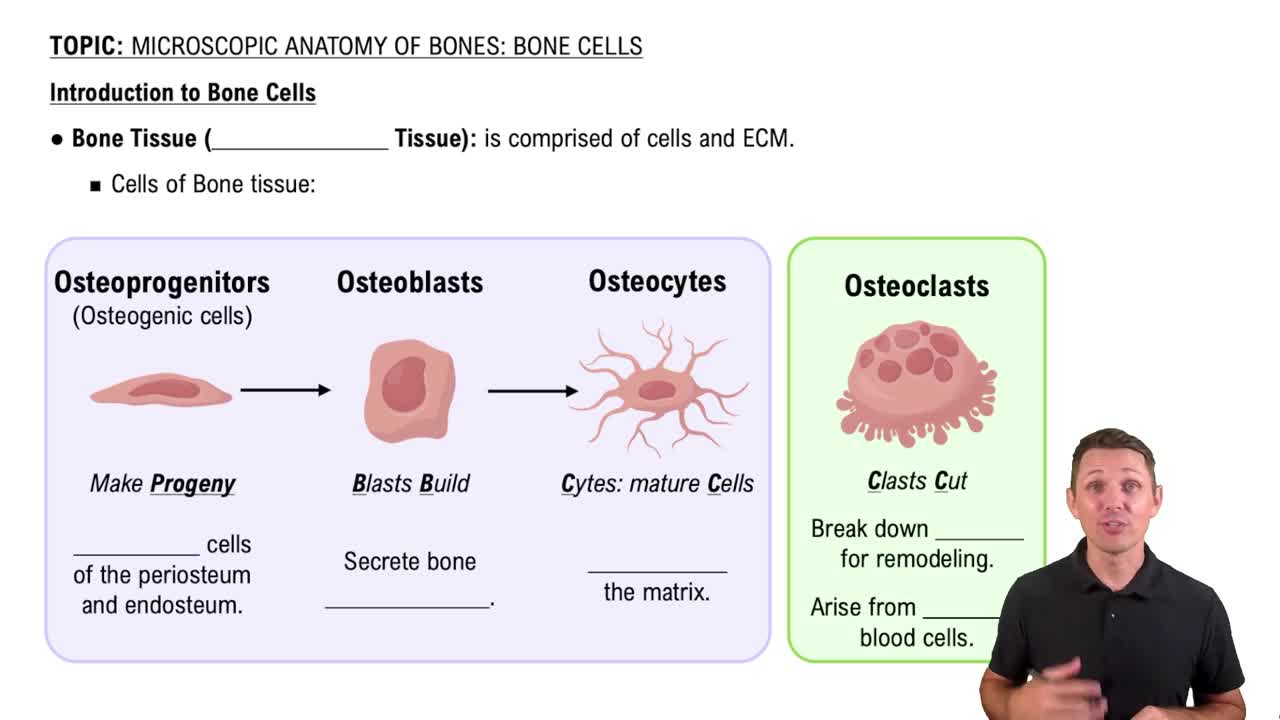Here are the essential concepts you must grasp in order to answer the question correctly.
Fracture Healing Stages
Fracture healing occurs in several stages: hematoma formation, fibrocartilaginous callus formation, bony callus formation, and bone remodeling. Each stage plays a critical role in restoring the integrity of the bone, with the bony callus being a temporary structure that stabilizes the fracture before remodeling occurs.
Recommended video:
Stages of Aerobic Cellular Respiration
Bony Callus Formation
Bony callus formation is the third stage of fracture healing, where the fibrocartilaginous callus is replaced by a hard bony callus made of woven bone. This process typically begins around 3-4 weeks post-injury and provides structural support, allowing for further healing and eventual remodeling of the bone.
Recommended video:
Bone Remodeling
Bone remodeling is the final stage of fracture healing, where the bony callus is gradually replaced by mature lamellar bone. This process can take several months to years and involves the resorption of excess bone and the reshaping of the bone to restore its original structure and strength, ensuring proper function.
Recommended video:
Introduction to Bone Cells
 Verified step by step guidance
Verified step by step guidance


